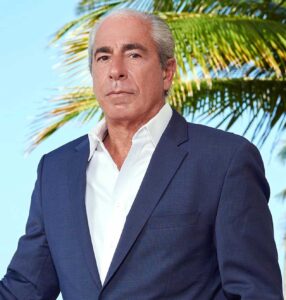Share Your Story with Trial Lawyer’s Journal
Trial Lawyer’s Journal is built on the voices of trial lawyers like you. Share your journey, insights, and experiences through articles, interviews, and our podcast, Celebrating Justice.
Stay Updated
Sign up for our newsletter to get the latest from TLJ.
What Is a Contingency Fee?
A contingency fee is a payment arrangement between a lawyer and client where the lawyer’s fee depends on the outcome of the case – the attorney only gets paid if they win or settle the case in the client’s favor. This type of fee structure is extremely common in personal injury law, enabling injured plaintiffs to obtain legal representation without paying upfront. People searching this term likely want to understand how contingency fees work, what percentage lawyers charge, and what to watch for in a contingency fee agreement. Key questions include: “What percentage do lawyers take from a settlement?” and “Do I owe anything if I lose my case?”
How Contingency Fees Work
In a contingency fee setup, the lawyer’s fee is “contingent” on recovering money for the client. If the lawyer succeeds in getting a settlement or judgment, their fee is a portion of that recovery. If the lawyer fails (no money is recovered for the client), typically the lawyer receives no fee. This shifts the risk of the litigation costs to the attorney – which can be comforting for cash-strapped plaintiffs. Key features include:
- Percentage of Recovery: The fee is usually calculated as a percentage of the total amount recovered for the plaintiff (through a settlement or court award). The exact percentage can vary, but a common standard is around 33⅓% (one-third) of the recovery. For example, in Illinois it’s typical to charge one-third. The range can differ by case and region – some agreements use a sliding scale (for instance, 33% if settled early, 40% if it goes to trial, etc.), and complex cases might warrant a higher percentage due to more work and risk.
- No Upfront Payment Required: The client does not pay a retainer or hourly fees. The attorney essentially invests time (and often money for case expenses) in exchange for a share of the outcome. This makes legal services accessible to those who can’t afford to pay out-of-pocket. As the Consumer Attorneys of California note, contingency fees help expand access to the courts for those without means
nakaselawfirm.com
. - Expenses and Costs: It’s important to distinguish fees from case costs (filing fees, expert witness fees, deposition costs, etc.). Most contingency fee agreements specify how costs are handled. Often, the attorney will advance case expenses, and then deduct those expenses from the recovery in addition to the fee. For instance, if $10,000 was spent on experts and the case settles for $100,000 with a 33% fee, the sequence might be: deduct $10,000 costs, leaving $90,000; then apply 33% fee to $90,000 ($29,700 fee), leaving the client $60,300. Alternatively, some agreements calculate the fee first on the gross amount, then subtract costs – the agreement should clarify this
signnow.com
. If there’s no recovery, some lawyers will not require reimbursement of costs (they eat the loss), while others might stipulate the client is responsible for costs win or lose. Always check this in the contract. - Written Agreement: Professional ethics rules (like the ABA Model Rule 1.5) require contingency fee agreements to be in writing and signed by the client
law.cornell.edu
. The agreement must spell out the percentage, whether that percentage is taken before or after costs, and other details. Reputable attorneys will thoroughly explain the terms before you sign.
Advantages of Contingency Fees for Plaintiffs
- Access to Justice: You can hire a skilled attorney even if you don’t have money upfront. This is crucial in personal injury cases where injuries might put you out of work and medical bills are piling up. The contingency model levels the playing field, allowing you to pursue claims you otherwise couldn’t.
- Incentive for the Lawyer: Your attorney has a direct financial motivation to maximize your compensation, since their payment increases with yours. This aligns your interests – both client and lawyer want the best possible outcome.
- Risk Sharing: The lawyer assumes the risk of the case. If the case is lost, you typically won’t owe attorney fees. This can give clients peace of mind that the lawyer truly believes in the case (as they wouldn’t take it if they thought it was a loser) and that the lawyer is invested in the result.
- No Immediate Financial Strain: Unlike hourly billing, you’re not receiving monthly bills from your lawyer. This can reduce stress and allow you to focus on recovery. The payment comes out of the settlement, so it’s essentially paid by the defendant’s side when you win.
Things to Watch for in a Contingency Fee Agreement
While contingency fees are generally straightforward, plaintiffs should carefully review the agreement and clarify any questions:
- Percentage and Calculation Base: Know the exact percentage and whether it can change. Also clarify if the percentage applies to the gross recovery or net (after costs). For instance, “33% of gross recovery” vs “33% after deducting costs” can make a difference in what you take home.
- Costs Responsibility: Understand who pays case expenses if you lose. Many firms waive costs if no recovery, but some might not. Also, if you win, confirm whether costs come out before or after calculating the fee (this can be negotiated).
- Scenario of Settlement vs. Trial: Some agreements set one percentage if the case settles before a lawsuit is filed, a higher if after filing, and possibly higher if it goes to trial or appeal. This is because going to trial is more work and risk. Ensure you’re aware of these tiers.
- Non-monetary Outcomes: In rare situations, if a case is resolved with non-cash benefits (like the defendant agrees to do something of value), how is the lawyer compensated? This is uncommon in personal injury (which usually results in money), but it’s good the contract addresses all possibilities.
- Ending the Relationship: What if you decide to switch attorneys or drop the case? Contingency agreements often have clauses about what happens if the client fires the attorney or vice versa. Typically, the lawyer might be entitled to fees for work done (quantum meruit) or a lien on the case. Understand this scenario, though hopefully it won’t occur.
Always feel free to ask the attorney to explain the fee agreement in plain language. It’s a legally binding contract, and you want to enter it with full understanding.
Conclusion
A contingency fee arrangement can be a win-win for personal injury plaintiffs and their lawyers: it provides access to legal representation without upfront costs and motivates attorneys to fight for the maximum compensation. As a plaintiff, it’s important to know the standard percentage in your area and any nuances of your agreement, so you’re not surprised at the end. Most personal injury attorneys will discuss their fee structure during the initial free consultation. Remember, reputable lawyers abide by ethical requirements – the agreement will be in writing and transparent. If you have any doubts about the terms, don’t hesitate to get a second opinion or ask another attorney to review the contract. In summary, with a proper contingency fee agreement, you can pursue justice even if you can’t afford to pay a lawyer hourly, making the legal system more accessible for injury victims.
What percentage do personal injury lawyers take on a contingency fee?
It varies, but typically around 33% (one-third) of the total recovery is common. Some cases might be 25% or 30% if settled quickly, or 40% if they go to trial. For example, one Illinois firm notes a usual one-third fee, subject to case complexity. Always check your agreement; complicated cases or appeals can incur higher percentages.
Do I have to pay anything if I lose my personal injury case?
Usually, under a pure contingency fee, you owe no attorney’s fee if you recover nothing. However, you might still be responsible for out-of-pocket costs (filing fees, expert witness fees, etc.) depending on your agreement. Many attorneys waive those costs if they lose, but it’s not guaranteed – read your contract. Generally, the financial risk of the lawyer’s time is on them, which is the point of contingency arrangements.
Are contingency fees only for personal injury cases?
Contingency fees are most common in personal injury and other civil tort cases (like medical malpractice, product liability, some employment and class action cases). They are not allowed in certain case types: for instance, ethical rules bar contingency fees in criminal defense and divorce cases. The model rules prohibit them where payment is contingent on securing a divorce or in criminal matters, due to policy reasons. But for injury cases, they are standard practice.
How do I know if a contingency fee agreement is fair?
Several factors indicate a fair arrangement: it complies with state law (some states cap contingency percentages for certain cases), it clearly outlines the fee percentage and cost handling, and it aligns with typical fees in your region. Most personal injury fees cluster around 30-40% of recovery, which courts have found reasonable given the risk attorneys take. If an attorney offers to take your case for a significantly higher percentage, you might seek a second opinion. Likewise, be cautious of unusually low percentages – ensure that attorney has the resources to competently handle your case. Ultimately, transparency is key: a fair agreement is written, explicit, and explained to you upfront.
Featured Articles
-
Glossary
What is a Demurrer Judgment?
What is a Demurrer Judgment? A Demurrer Judgment is a court ruling issued after a defendant files a demurrer, arguing that the plaintiff’s complaint.
-
Glossary
What is the TPPRA?
What is the TPPRA? The TPPRA, or Third Party Payor Recovery Act, is a legal statute—most notably used in states like Texas—that gives third-party.
-
Glossary
What are Jury Instructions?
What are Jury Instructions? Jury instructions are the formal legal directions given by a judge to the jury before deliberation in a trial. These.
Explore our Contributors
Discover Next
Insights from Experts
Learn from industry experts about key cases, the business of law, and more insights that shape the future of trial law.







